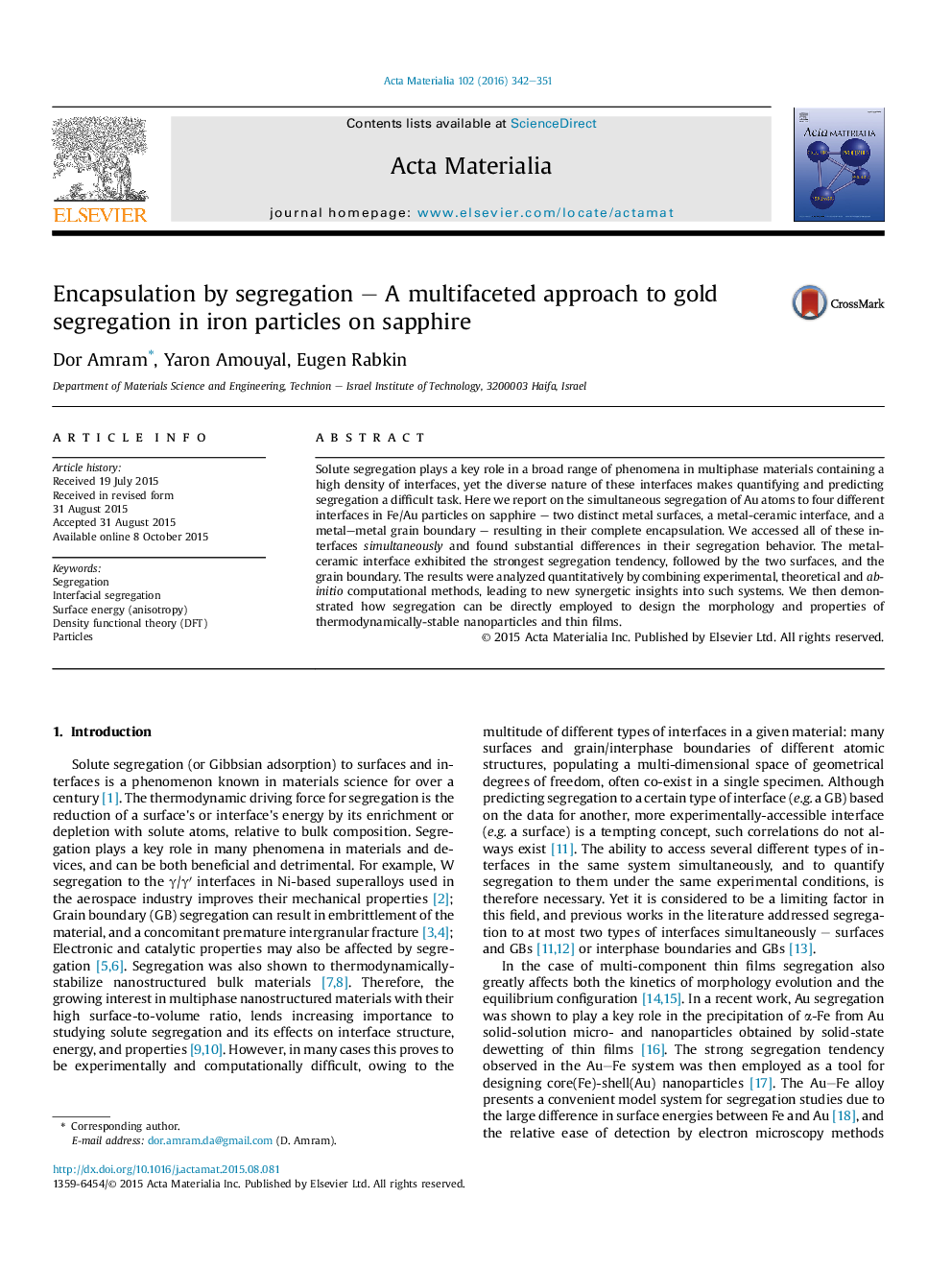| Article ID | Journal | Published Year | Pages | File Type |
|---|---|---|---|---|
| 1445210 | Acta Materialia | 2016 | 10 Pages |
Solute segregation plays a key role in a broad range of phenomena in multiphase materials containing a high density of interfaces, yet the diverse nature of these interfaces makes quantifying and predicting segregation a difficult task. Here we report on the simultaneous segregation of Au atoms to four different interfaces in Fe/Au particles on sapphire – two distinct metal surfaces, a metal-ceramic interface, and a metal–metal grain boundary – resulting in their complete encapsulation. We accessed all of these interfaces simultaneously and found substantial differences in their segregation behavior. The metal-ceramic interface exhibited the strongest segregation tendency, followed by the two surfaces, and the grain boundary. The results were analyzed quantitatively by combining experimental, theoretical and ab-initio computational methods, leading to new synergetic insights into such systems. We then demonstrated how segregation can be directly employed to design the morphology and properties of thermodynamically-stable nanoparticles and thin films.
Graphical abstractFigure optionsDownload full-size imageDownload high-quality image (311 K)Download as PowerPoint slide
